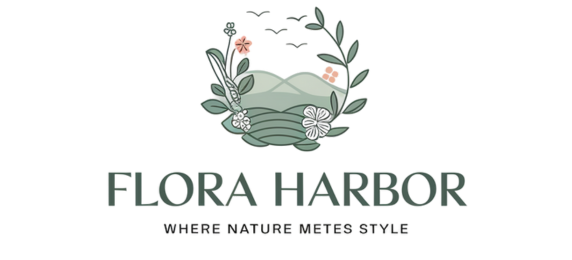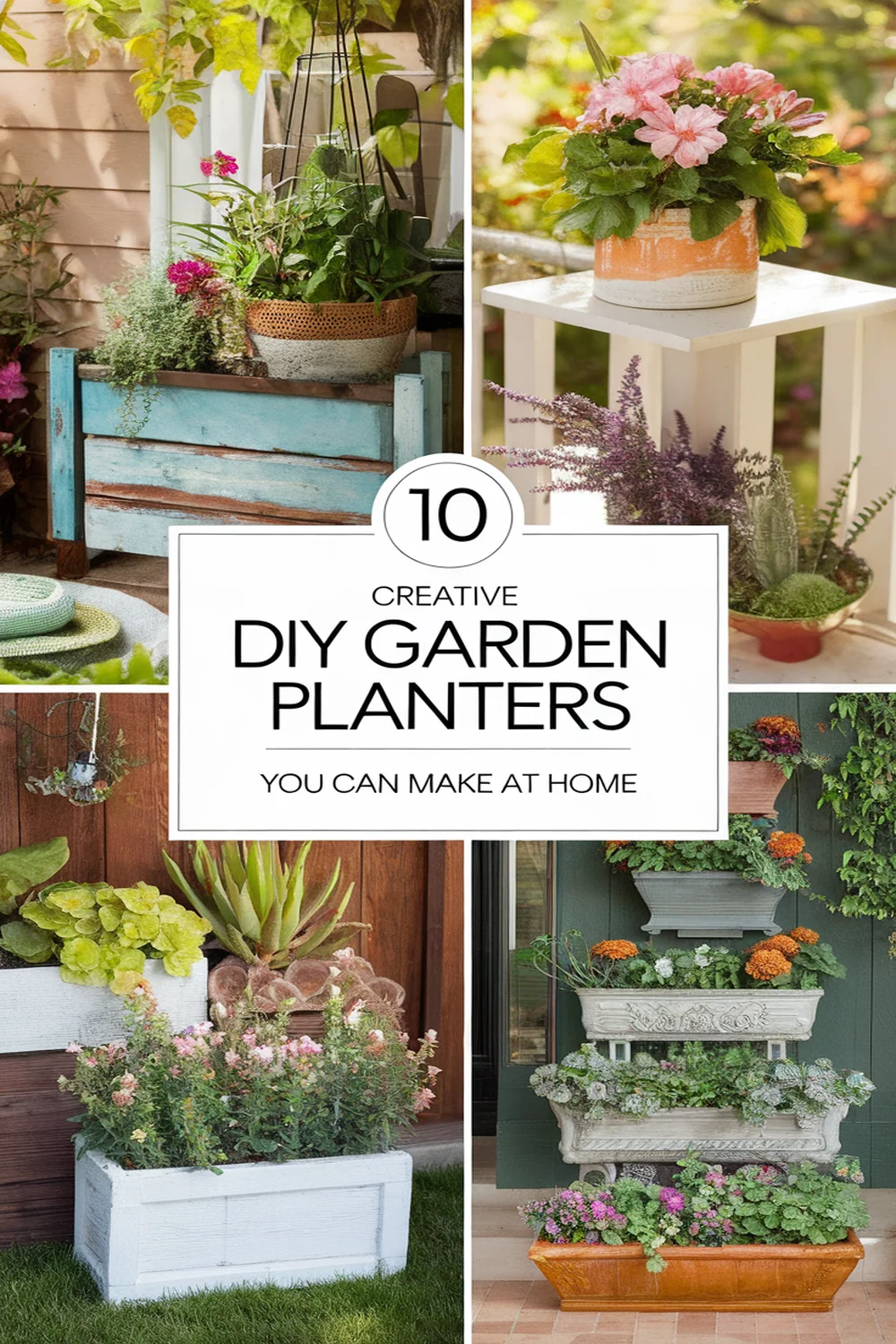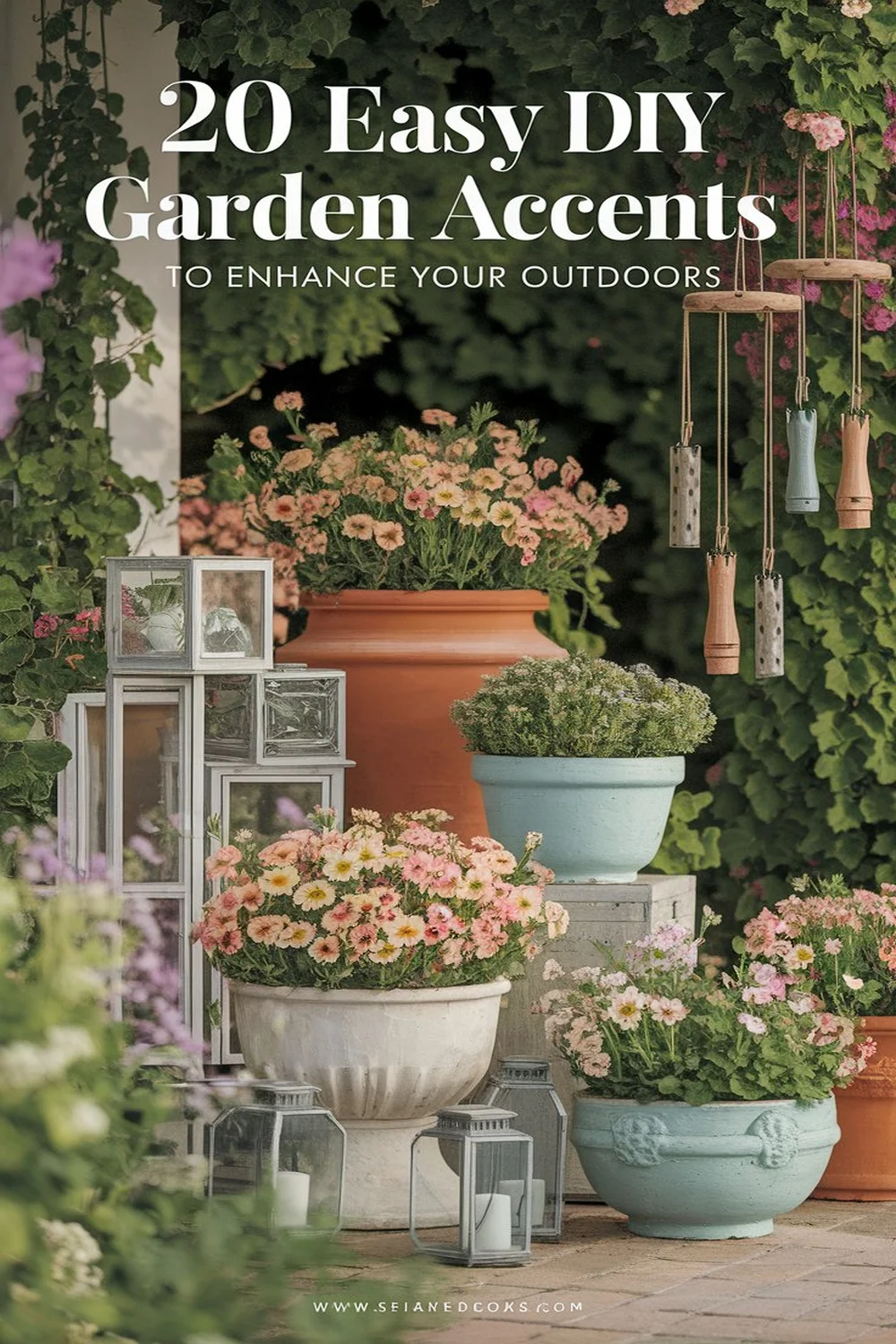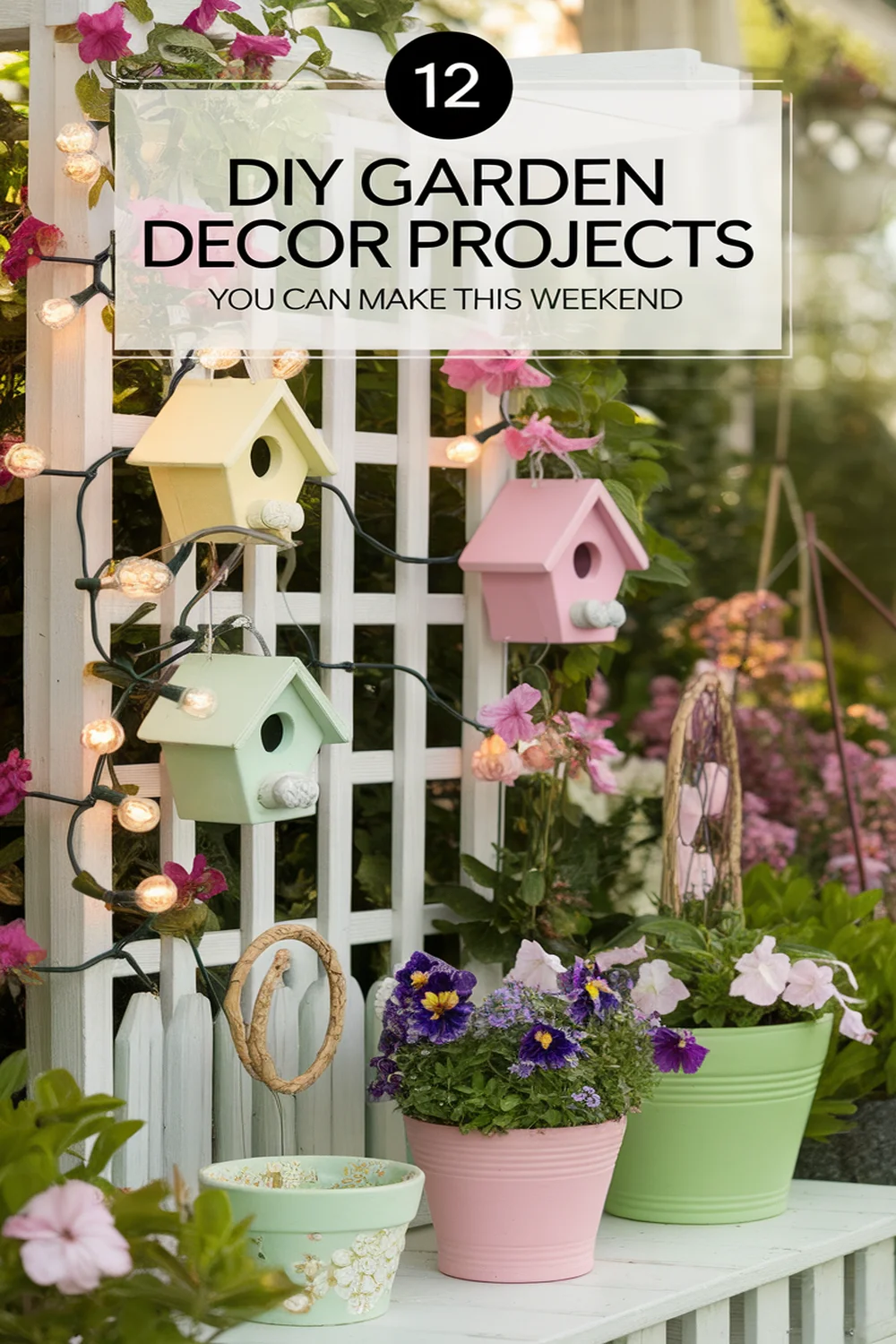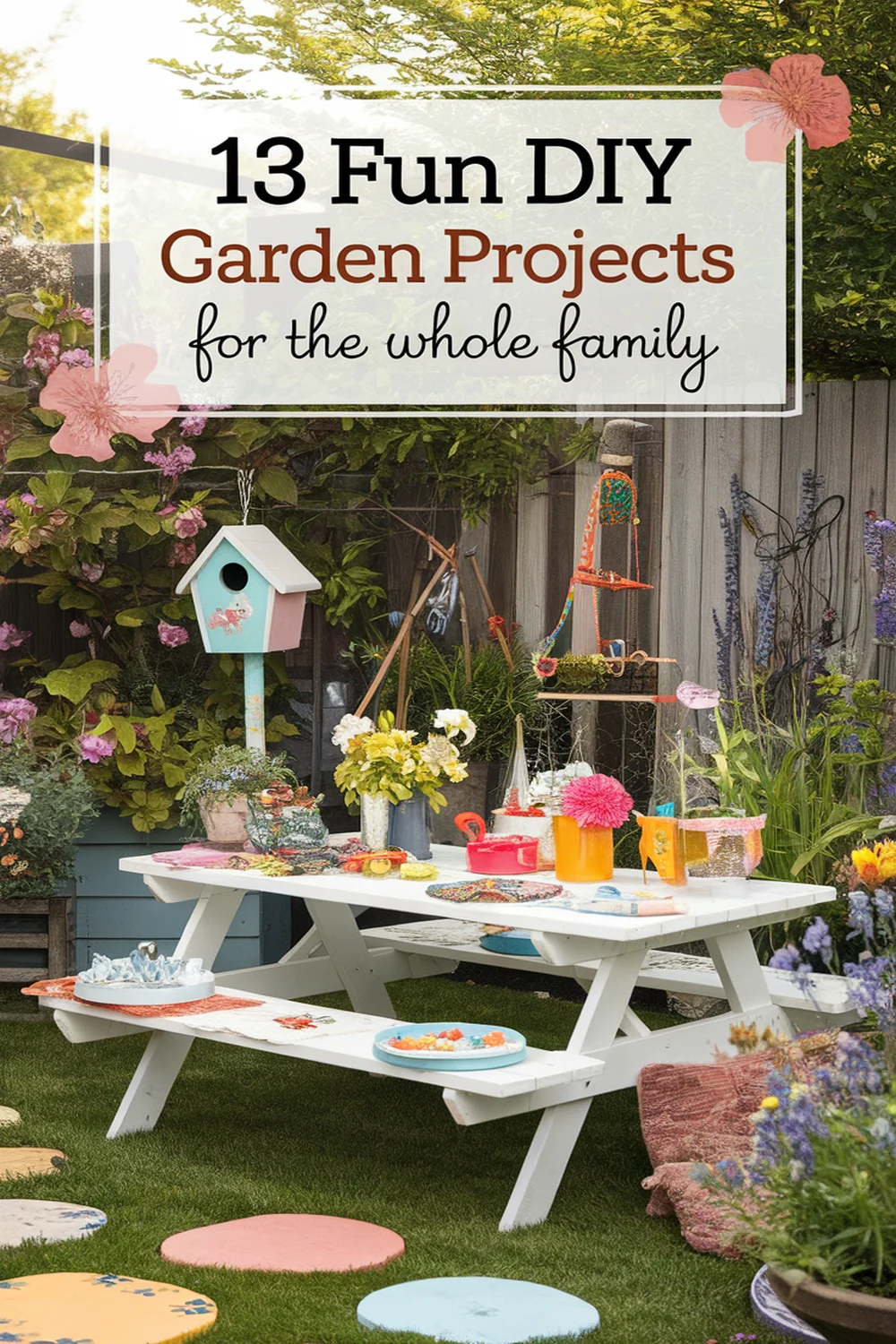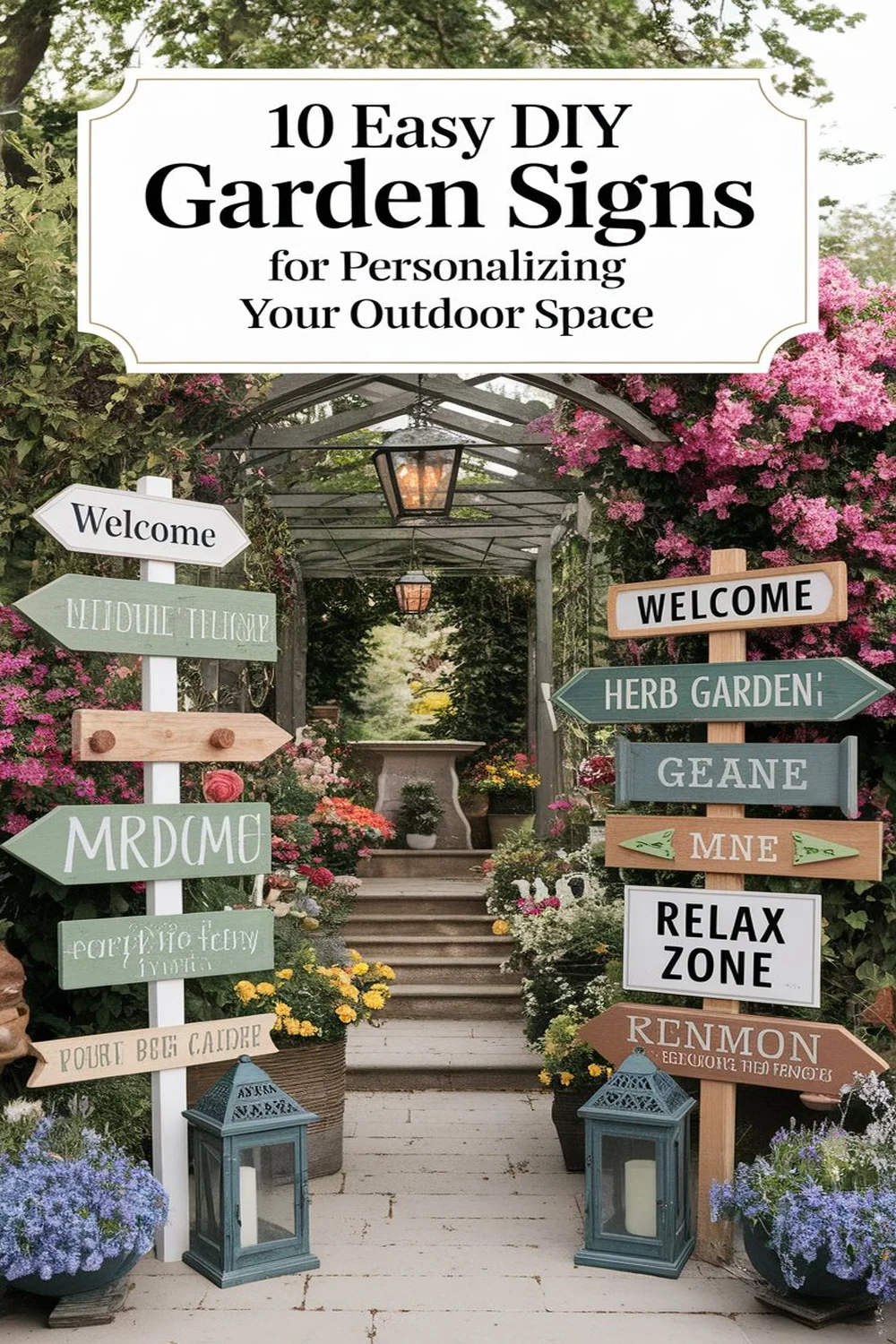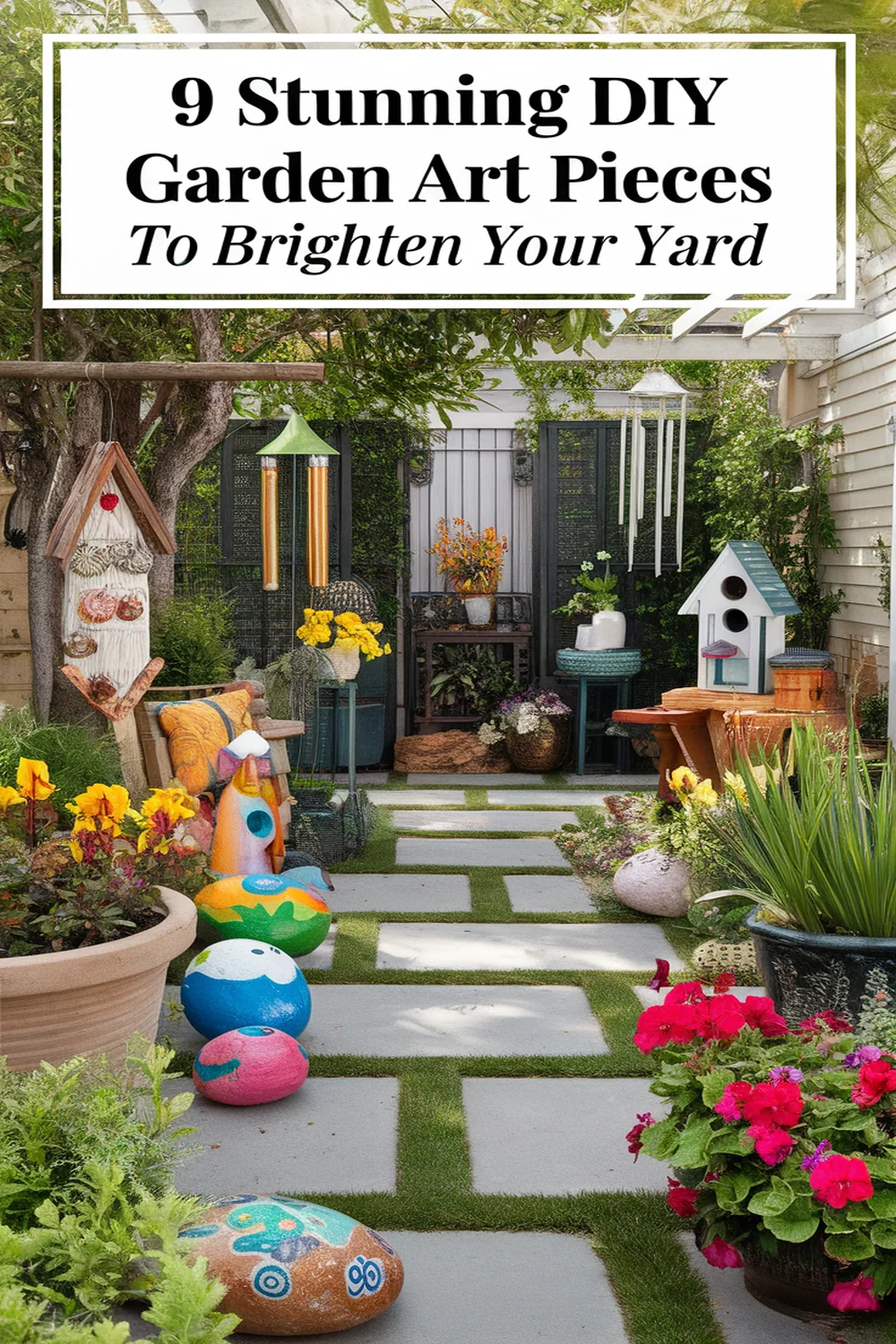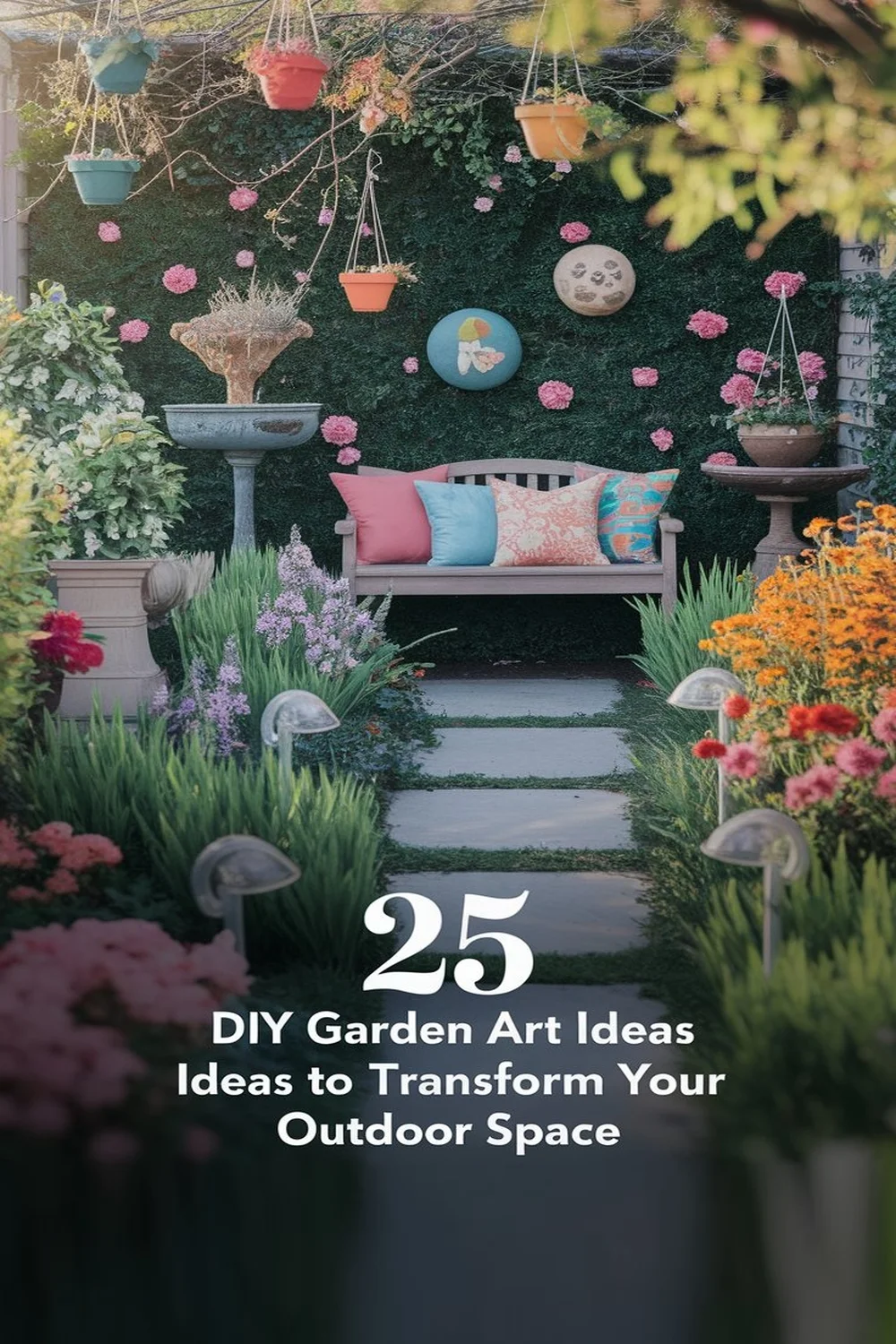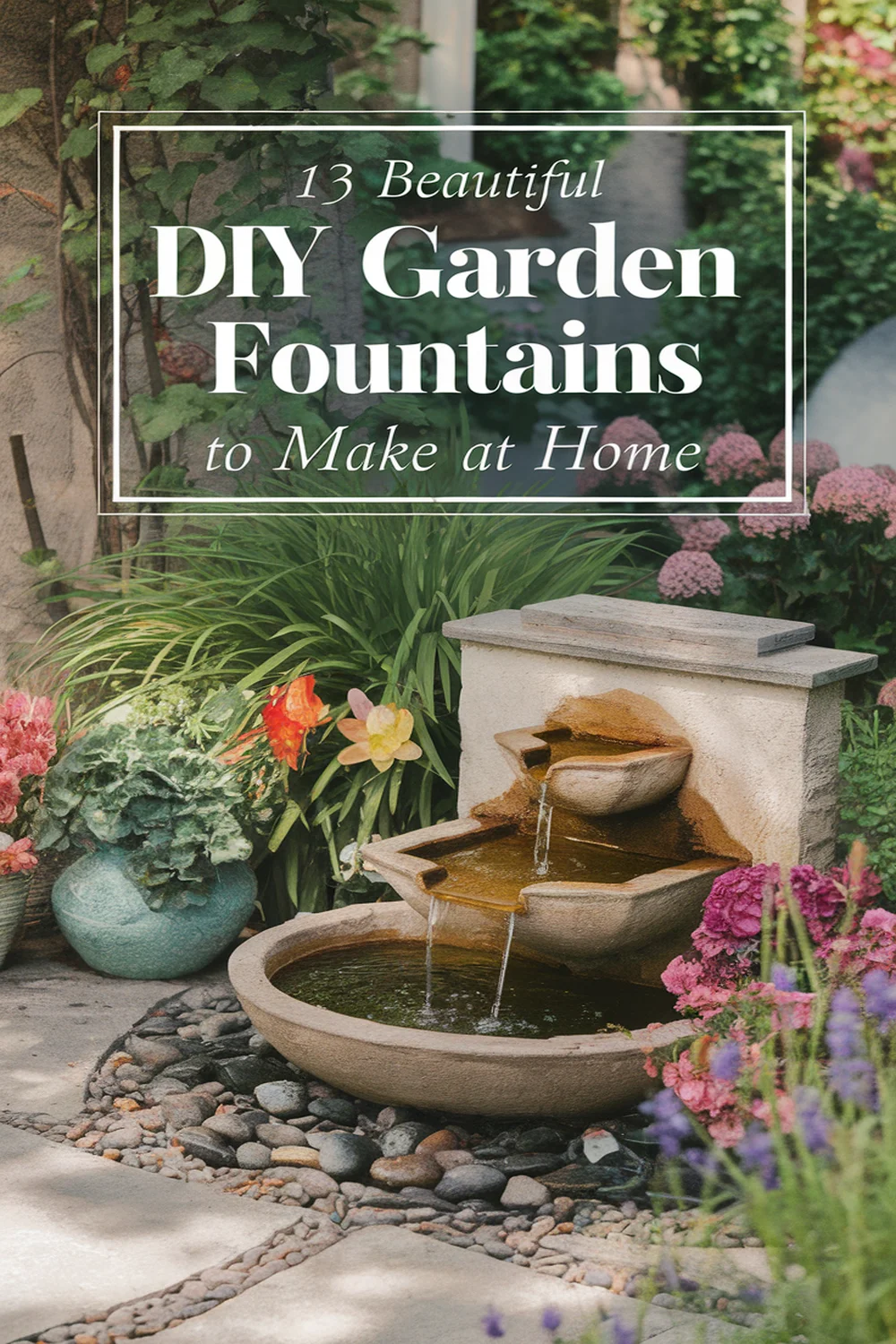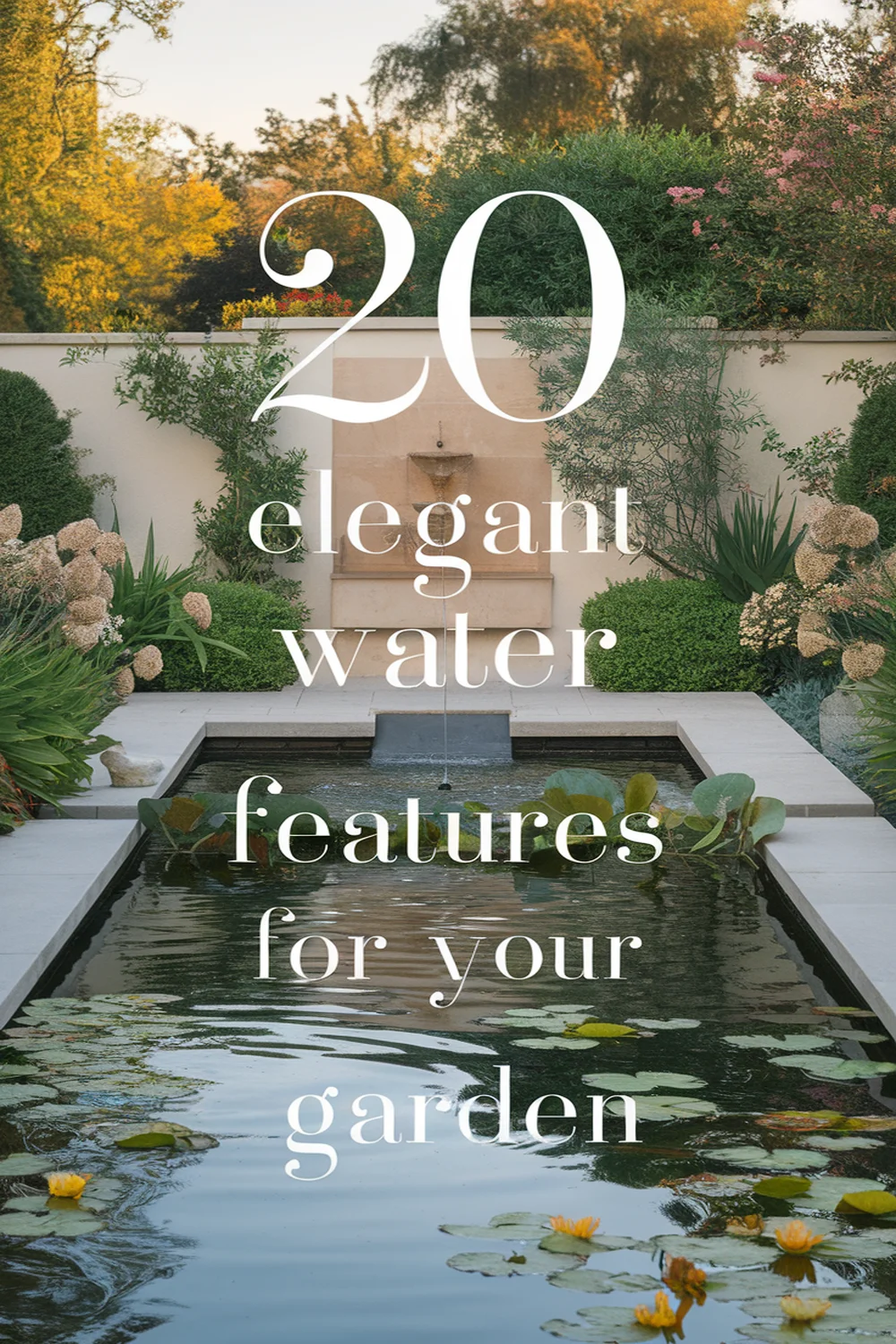This post may contain affiliate links. Please read our policy page.
Transform your outdoor space with stunning DIY garden planters you can easily create at home. Consider wooden crate planters for a rustic charm, or upcycled tire planters that promote sustainability and unique displays. Try PVC pipe vertical planters for space-saving solutions, and don’t forget about colorful painted bucket planters that add personality. Each of these projects brings beauty and functionality to your garden, and there’s even more inspiration waiting for you to explore.
Wooden Crate Planter
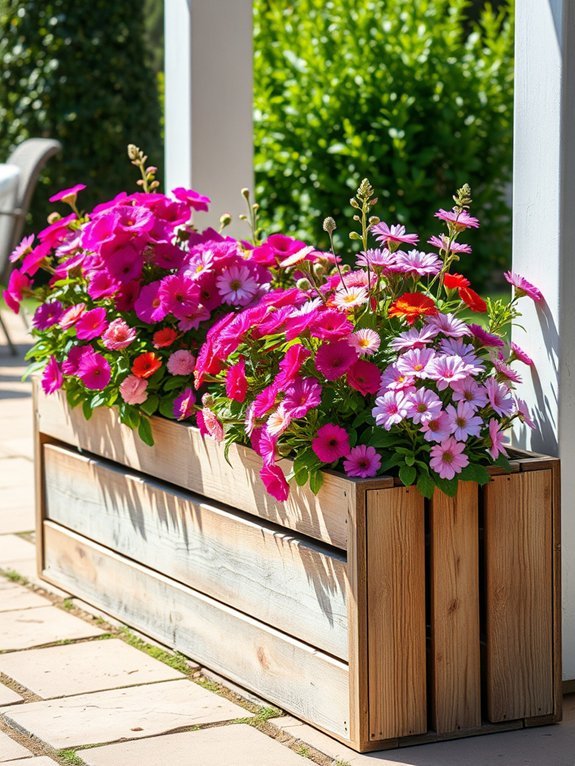
When you want to add a rustic charm to your garden, a wooden crate planter is the perfect solution. These charming planters bring a touch of nature’s beauty while being functional. Start by finding old wooden crates—perhaps at a flea market or your local yard sale. Sand down rough edges and apply a weather-resistant finish to protect the wood. Next, line the bottom with landscaping fabric to allow drainage while keeping soil in place. Fill your crate with potting soil, then plant your favorite herbs, flowers, or succulents. Arrange the crates at varying heights for depth or use them as a window box. With minimal effort, you’ll create an inviting space that showcases your plants beautifully.
Recommended Items
Get ready to unleash your creativity with these fantastic product and equipment recommendations!
Upcycled Tire Planter
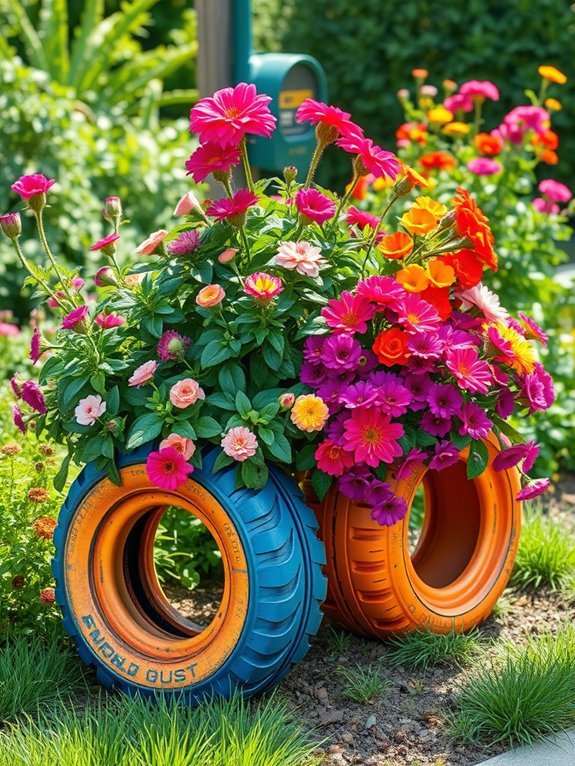
Transforming old tires into planters adds a unique touch to your garden while promoting sustainability. Start by cleaning the tire thoroughly, removing dirt and debris. If you want to add character, consider painting it with weather-resistant paint in vibrant colors. For drainage, create holes in the bottom. Once you’ve prepared your tire, fill it with a nutrient-rich potting mix and add your favorite plants—succulents, flowers, or herbs work beautifully. To showcase your tire planter, elevate it on a wooden pallet or place it against a vibrant garden backdrop. You can stack tires for a multi-tiered effect, allowing for a variety of plants and creating a striking visual display in your outdoor space. Enjoy your eco-friendly masterpiece!
Step-by-Step Guide for DIY Garden Planters
PVC Pipe Vertical Planter
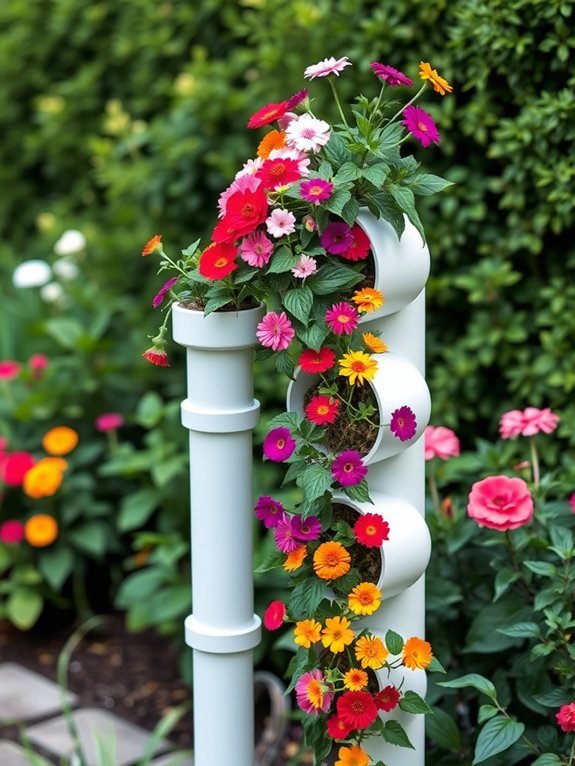
If you’re looking to maximize your gardening space without sacrificing style, a PVC pipe vertical planter is an innovative solution. This eye-catching design allows you to grow herbs, flowers, or small vegetables in a compact area. Start by cutting your PVC pipes into manageable sections, about two feet long. Drill small holes in each section for drainage and place them vertically against a wall or fence.
Fill each pipe with a quality potting mix, and plant your chosen seeds or seedlings. Consider painting your pipes or adding decorative elements for added flair. As the plants grow, they’ll create a lush vertical garden, enhancing your outdoor space. This planter not only saves space but also adds a unique, modern touch to your garden.
Cinder Block Planter

While you might think of cinder blocks as just construction material, they can be transformed into stylish and functional planters that add a rustic charm to your garden. Start by stacking cinder blocks to create a unique arrangement. You can use them upright for deep planting or lay them flat for a more traditional box style. Fill the openings with soil and choose your favorite flowers or herbs for planting. To enhance aesthetics, consider painting the blocks or adding decorative stones around the base. Make sure to drill drainage holes to prevent waterlogging. These planters are not only durable but also provide a robust structure for your plants to thrive, all while turning an ordinary item into an eye-catching garden feature.
Hanging Garden Planter
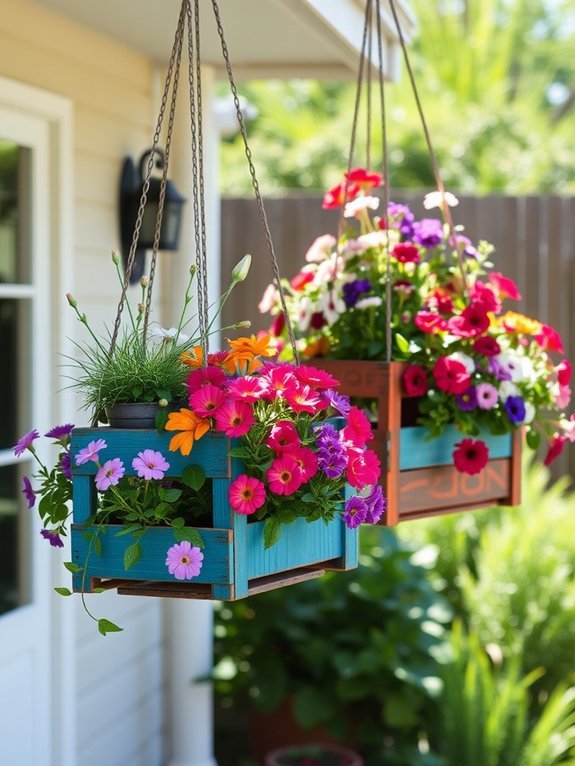
Hanging garden planters offer a creative way to utilize vertical space, making them perfect for small gardens or patios. You can easily create a stunning display by using repurposed items like old wooden crates, tin cans, or even macramé hangers. Select your favorite plants—herbs, succulents, or flowering vines—for a vibrant effect. Make sure to choose lightweight, well-draining soil to prevent the planters from becoming too heavy. Hang your creations at various heights to add depth and interest to your space. Regularly check the plants for watering and pruning needs, ensuring they thrive. With your hanging planters, you’ll not only beautify your area but also enjoy a unique and functional garden right at home.
Wine Barrel Planter
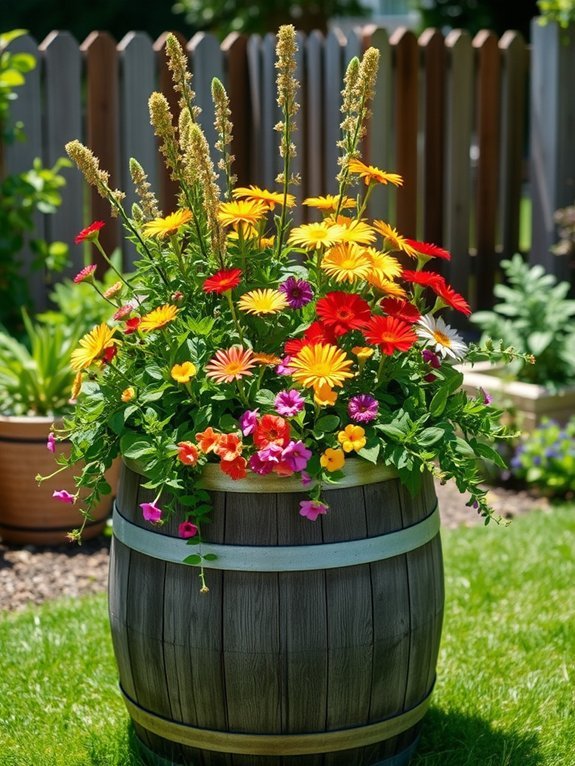
A wine barrel planter transforms your garden into a rustic haven while providing ample space for a variety of plants. Imagine the charm it adds, plus its sturdy structure easily accommodates a range of herbs, flowers, or even small shrubs. You can enhance its appeal with creative painting or staining, aligning it with your garden’s aesthetic.
Here’s a simple guide to help you fill your wine barrel planter effectively:
| Plant Type | Ideal Quantity |
|---|---|
| Herbs | 5-7 plants |
| Annual Flowers | 6-8 plants |
| Perennials | 3-5 plants |
| Small Shrubs | 1-2 plants |
| Succulents | 10-12 plants |
With proper drainage and sunlight, your wine barrel planter will flourish beautifully.
Mason Jar Herb Planter
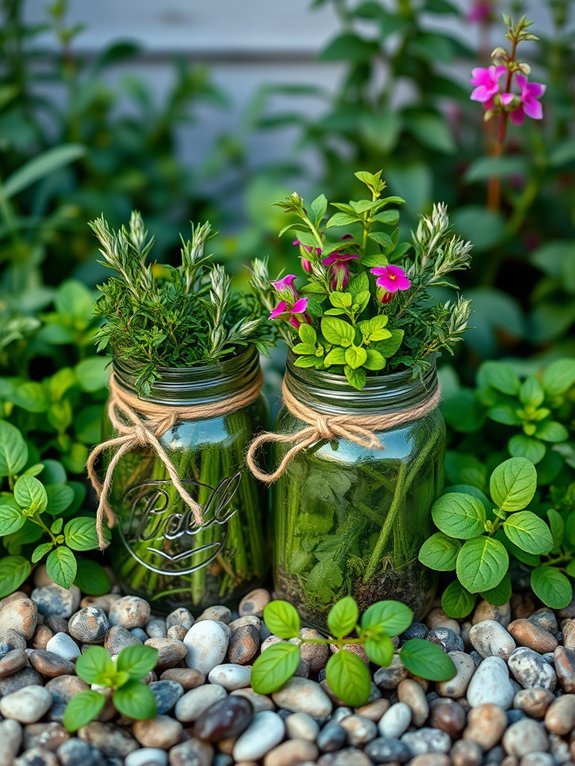
Mason jar herb planters bring a touch of whimsy to your gardening experience while offering a practical solution for growing fresh herbs right in your kitchen or on a sunny windowsill. Start by selecting jars in various sizes, then fill them with high-quality potting soil. Choose your favorite herbs—basil, parsley, or cilantro work beautifully—and gently press the seeds into the soil. Make sure to label each jar with a charming tag for easy identification. Water lightly, ensuring good drainage, and place them where they’ll bask in sunlight. With a little care, you’ll soon enjoy lush greenery adding flavors to your meals. Plus, these cute jars add a rustic charm to any space, making them not just functional but also a delightful decor piece.
Succulent Wall Planter

While creating a succulent wall planter may sound challenging, it’s a rewarding project that transforms your living space into a vibrant tapestry of greenery. Start by selecting a wooden frame or an old pallet, ensuring it has good drainage. Next, attach landscape fabric to the back, creating pockets for your succulents. Fill these pockets with a well-draining soil mix that provides adequate aeration. Choose a variety of succulents—consider their growth patterns and colors for visual interest. Carefully plant each succulent, leaving space between them for growth. Once assembled, hang your planter in a location with ample light, and water sparingly, allowing the soil to dry out between waterings. You’ll love watching your living wall flourish!
Colander Planter
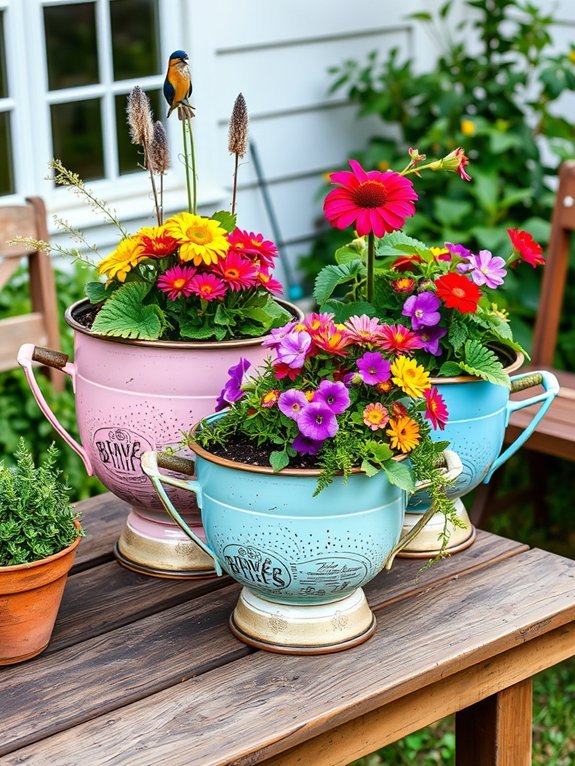
If you’ve embraced the charm of a succulent wall planter, you might enjoy the quirky appeal of a colander planter. Think of the texture and character it adds to your garden! To begin, select a vintage or colorful colander, guaranteeing it has drainage holes. Fill it with potting mix and plant your favorites, like herbs or flowers. You can even hang it for a whimsical touch or set it on a table for easy access.
Here’s a quick guide to get you started:
| Step | Description |
|---|---|
| Choose a colander | Find one that suits your style |
| Add drainage | Confirm holes are at the bottom |
| Plant and display | Fill with soil and plants |
Your garden will radiate charm with this unique DIY planter!
Painted Bucket Planter
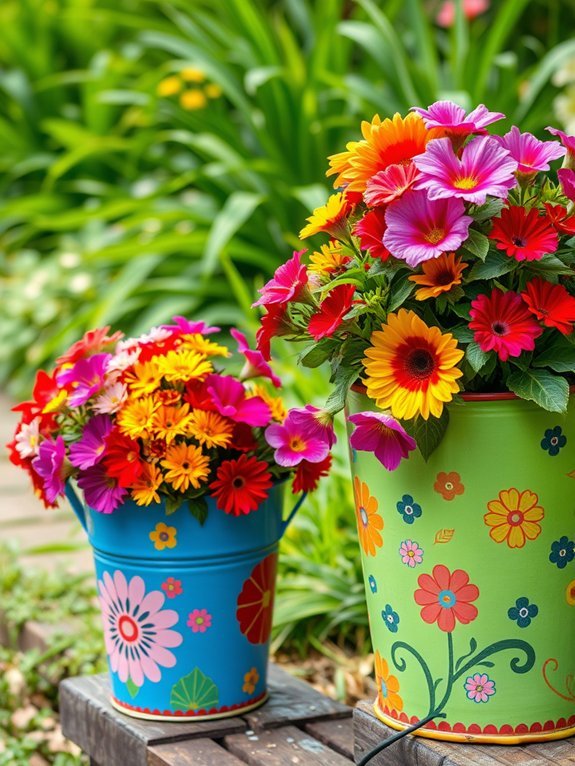
Transforming a plain bucket into a painted bucket planter can add a splash of color and personality to your garden. Start by selecting a metal or plastic bucket, ideally 5 gallons for adequate plant growth. Clean it thoroughly and allow it to dry. Next, choose vibrant, weather-resistant paint. Use a brush or sponge to apply your first coat, and feel free to get creative with designs—stripes, polka dots, or even stencils of your favorite flowers. After it dries, drill a few drainage holes at the bottom for healthy roots. Fill it with potting soil and your chosen plants. Whether flowers or herbs, your painted bucket planter will be a delightful focal point, bringing joy and charm to your outdoor space.
